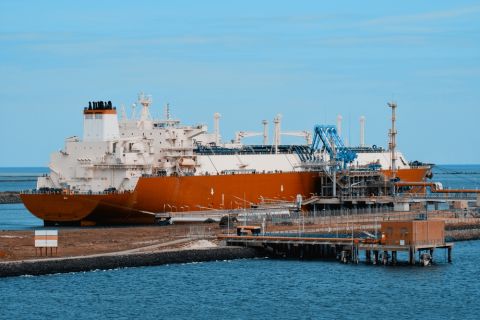When it comes to achieving that critical balance of optimizing recovery while reducing cost and minimizing risk, wellbore integrity tops the list of operator priorities. Casing damage and cement deterioration can significantly jeopardize wellbore integrity, resulting in increased costs and nonproductive time (NPT) or even a dangerous kick or blowout.
Casing and cement evaluation to identify problems before these impact field economics and threaten crew safety and the environment are essential in all phases of well development, from unconventional hydraulic fracturing operations to challenging offshore campaigns.
Mechanical integrity evaluation has improved significantly in recent years. Developments in ultrasonic scanning tools have resulted in more effective casing thickness measurements, and advances in magnetic flux leakage tools allow them to deliver greater reliability in identifying otherwise undetectable holes, cracks and other anomalies in the casing. New 3-D visualization capabilities with high-resolution data delivered in real time enable operators to detect cement and casing imperfections with greater accuracy and certainty.
Historically, casing and cement inspection has involved running evaluation tools on separate strings in multiple trips downhole, a limitation that adds cost and time to the operation. A new service has been devised that combines the capabilities of several casing and cement evaluation tools on one string, minimizes NPT and rig time and enhances data quality by delivering a complementary and independent set of measurements. Each tool generates a distinct set of curves or logs that complement each other, facilitating better log-quality control, data confidence and comprehensive analysis.
Depending on the customer’s needs, the tools can be run in any combination or separately. The approach provides a level of redundancy that gives operators validation that the wellbore is safe for intervention and remediation work required in the growing number of mature wells.
In new completions, where focus on well integrity has heightened in recent years, the methodology can be valuable as a preventive measure by determining whether to pressure up a well from the surface, for example, or run packers to isolate any weak spots in the casing.
The Weatherford SecureView casing and cement evaluation service, which was launched at the 2015 Offshore Technology Conference in Houston, brings together the latest generation of four technologies for evaluating casing and cement integrity:
- UltraView, an ultrasonic measurement tool enhanced with a discrete Fourier transform algorithm, uses a rotating ultrasonic transmitter/receiver sensor to scan the borehole and calculate properties such as casing thickness and cement acoustic impedance;
- CalView, a high-resolution, multisensory caliper tool, uses an array of 40 or 60 precision-calibrated independent mechanical arms to measure casing inside diameter (ID), regardless of internal defect;
- FluxView, a magnetic flux leakage tool, is designed with a powerful magnet to produce concentrated levels of magnetic flux in the casing wall, which can leak in the event of casing defects; and
- BondView, a cement-bond tool (CBT), features a sonic transmitter and two receivers to provide traditional data such as amplitude travel time, signature and variable density-log information to interpret and analyze casing-to-cement and cement-to-formation bonds.
All except the cement-bond technology have 3-D visualization capabilities.
In field tests, different combinations of the tools deployed on one string successfully detected casing damage and separation in well post-fracturing and also evaluated casing integrity prior to initiating hydraulic fracturing. Case studies from two of the field tests are presented in SPE paper 172807-MS.
Before, after fracturing evaluation
In an unconventional oil well in South Texas, the ultrasonic measurement tool was used in combination with the multisensor caliper and the CBT after the operator noticed the casing collar had moved upward a few feet post-fracturing. A casing bond log (CBL) had been run prior to fracturing, but the condition of the casing post-fracturing was unknown.
The ultrasonic measurement tool generated cement and casing evaluation logs, while the CBT showed an absence of pipe from 98.8 m to 100.6 m (324 ft to 330 ft) and an irregular cement response from 99.4 m to 104.3 m (326 ft to 342 ft). From 98.8 m to 103 m (338 ft), the casing ID also increased.
The deployment of the 40-arm multicaliper tool to further analyze the condition of the 5½-in. outside diameter (OD) casing revealed that there was no casing wall between 98.8 m and 100.6 m, with additional abnormalities indicated down to 103.6 m (340 ft). Further analysis determined that the collar, positioned at 87.8 m (288 ft) by the CBL prior to fracturing, had shifted up to a depth of 86 m (282 ft) in the ultrasonic log post-fracturing.
The triple-tool combination determined that the casing had separated a total of 1.8 m (6 ft) between 97.6 m (320 ft) and 103.6 m due to pressure buildup during the fracturing operation. While the ultrasonic tool had determined the casing was in good condition inside and out at the starting depth of 99 m (324.7 ft), the multisensor caliper indicated a defect just beneath that depth. The 3-D imaging software in both tools visualized the defects in more detail to provide a better description of the casing condition.
Moving down an additional 0.6 m (2 ft), the ultrasonic tool showed both ID and OD increasing, with a remaining wall of 73% and a large internal cut. The multisensor caliper also showed enlarged diameters with two cuts in the casing. Continuing down another 0.3 m (1 ft), the ultrasonic tool showed a total break of the casing, while the multisensor caliper showed a total casing break with two ID enlargements.
Both tools showed a complete absence of casing for several feet, with first readings of good casing at 101.5 m (333 ft) with a high percentage of remaining wall.
The field tests showed that one evaluation tool can identify defects that another tool cannot, both before a well is hydraulically fractured and post-fracturing. The combination of multiple tools deployed on one string delivered more detailed and comprehensive data, enabling the operator to better interpret what was happening downhole and make informed wellbore integrity decisions efficiently and cost-effectively.
Recommended Reading
The Jones Act: An Old Law on a Voyage to Nowhere
2024-04-12 - Keeping up with the Jones Act is a burden for the energy industry, but efforts to repeal the 104-year-old law may be dead in the water.
Venture Global Gets FERC Nod to Process Gas for LNG
2024-04-23 - Venture Global’s massive export terminal will change natural gas flows across the Gulf of Mexico but its Plaquemines LNG export terminal may still be years away from delivering LNG to long-term customers.
Hirs: LNG Plan is a Global Fail
2024-03-13 - Only by expanding U.S. LNG output can we provide the certainty that customers require to build new gas power plants, says Ed Hirs.
Exclusive: The Politics, Realities and Benefits of Natural Gas
2024-04-19 - Replacing just 5% of coal-fired power plants with U.S. LNG — even at average methane and greenhouse-gas emissions intensity — could reduce energy sector emissions by 30% globally, says Chris Treanor, PAGE Coalition executive director.
Watson: Implications of LNG Pause
2024-03-07 - Critical questions remain for LNG on the heels of the Biden administration's pause on LNG export permits to non-Free Trade Agreement countries.





